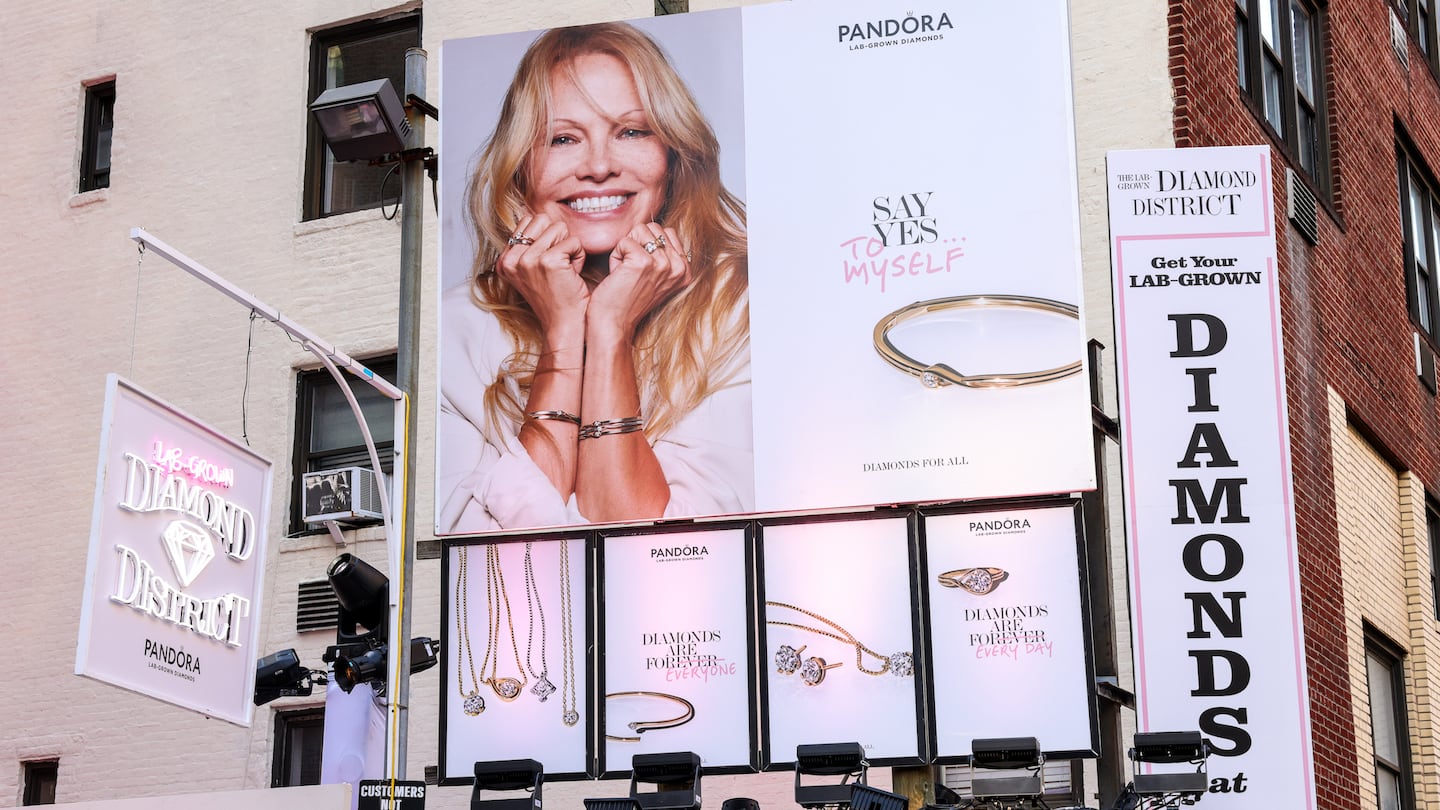
The Business of Fashion
Agenda-setting intelligence, analysis and advice for the global fashion community.

Agenda-setting intelligence, analysis and advice for the global fashion community.

Since its inception in 1982, jewellery brand Pandora has evolved from a single store in Copenhagen to the world’s largest jewellery brand by volume. The fully vertically integrated business operates two LEED-certified manufacturing facilities in Thailand and maintains tight control on its distribution, across 6,700 points of sale in more than 100 countries.
In 2021, the brand launched its Phoenix strategy, designed to usher in a new phase of growth via four pillars believed to deliver sustainable and profitable revenue growth: investing in brand perception; leveraging consumer insight to inform product design; personalising the customer experience; and investing in its core markets, particularly in the US and China. The strategy has since yielded positive results — it ended 2023 with 8 percent growth and revenue of more than $4 billion.
Today, it is scaling up its investments to accelerate revenue growth, with particular emphasis on its store network and brand desirability. Central to the strategy to operate more responsibly while broadening its customer base are lab-grown diamonds — a core component of Pandora’s product portfolio. The global lab-grown diamonds market is set to grow at a CAGR of 6.7 percent by 2032, when it is forecast to reach US$20.6 billion. Since 2022, the brand’s diamonds have been grown, cut and polished using 100 percent renewable energy and set in 100 percent recycled silver and gold. Mined diamonds are no longer used in Pandora products.
This commitment falls as part of a broader strategy for more sustainable business practices. Since 2020, Pandora has operated its crafting facilities using renewable energy and has committed to becoming carbon neutral across all of its operations by 2025. A commitment to purchasing 100 percent of the silver and gold required for its jewellery from recycled sources has already been met — a year ahead of its target — to alleviate the need for virgin natural resources.

Now, BoF sits down with Pandora’s chief marketing officer Mary Carmen Gasco-Buisson to discuss the company’s elevation strategy and how investments to both product and brand are contributing to growth in 2024.
Investing in brand elevation has two strategic purposes for Pandora. The first is around developing perception and awareness beyond our charm bracelet — a product for which, until more recently, we were best known. We have since expanded our product offering via materials like silver, gold and lab-grown diamonds and raising awareness of this shift is key.
The second aspect of elevation we are prioritising is how Pandora shows up and presents itself to our customers. We are working to be more intentional in communicating our brand’s point of view. We are known for the charm bracelet, but today, we are an accessible luxury brand, working to make high-quality jewellery available to people globally. We want to show up consistently on that message.
The Phoenix strategy acknowledges that the “brand” is critical to the evolution of our business. When consumers want to buy jewellery today — as a self-gift or for others — they will think of a brand first. They want to associate themselves with brands that carry a strong point of view. It’s why the first pillar of our Phoenix strategy focuses on brand perception.
The second pillar focuses on product design — we often talk about brand being “queen” and product being “king”. When we look at the different profiles of our customers, we find a broad set of needs. The current Pandora customer spans ages, income levels and nationalities. Our expansion of our brand, from charms and bracelets, to a full jewellery brand spanning multiple categories, ensures that we speak to all of those customers. It’s why we need to make sure our assortment reflects that and also evolves with trends and taste levels.
Consumers want to associate themselves with brands that carry a strong point of view. It’s why the first pillar of our Phoenix strategy focuses on brand perception.
The third pillar focuses on personalisation and experiences. Jewellery is inherently connected to self-expression, so we are working to make it easier and more enjoyable for customers to express themselves through these purchases. Then the fourth and final pillar speaks to market dynamics — it’s the core markets where we see the most growth potential to deliver the best value for our stakeholders.
At Pandora, we have made a concerted effort to play on both the brand and performance sides of marketing. There is value in both and we recognise they serve different purposes to support the long-term health of the brand. Thankfully, we didn’t swing the pendulum entirely towards performance marketing during its heyday because we know customers are buying into brands — especially in categories like jewellery where the purchase is more of an investment and should have longevity.
Marketing feeds into our four-pillar approach. For example, the third component of the strategy focuses on being unmissable and omnipresent, and we understand that the fastest-growing brands today carry year-round cultural relevance. This informed our partnership with the The Fashion Awards in the UK and ambassadorships with global icons like Pamela Anderson.
At every step, executional quality is critical. The way all of these strategies are executed has a huge part to play in the perceived value of your brand.
Despite the climate, the US remains an important market to us. I think that in the context of this uncertain outlook, Pandora is, in fact, well positioned to serve this customer base.
We are honing our offering to offer high-quality products to big portions of the population. Our message, particularly with products like lab-grown diamonds, is that consumers can have beautiful products and craftsmanship at a more accessible price point. We know that when customers are feeling a bit pinched, they turn to brands that have a reputation for delivering great value. We have a responsibility to realise this for our customers.

Lab-grown diamonds felt like a natural extension of our product offering. Jewellery with diamonds represent about a quarter of the entire category globally and form a huge part of the rituals of sharing and expressing love around the world. We feel at Pandora that, if it can be made more accessible to customers while also being less environmentally impactful, then it absolutely makes sense to pursue.
We have seen enthusiastic rates of adoption, especially in the US and Australian markets. Today, growth in the lab-grown sector is outpacing any other diamonds segment. We expect to reach a revenue of 1 billion DKK (Danish Krone) by 2026.
We are proud to be driving that accessibility. Then, when you consider that these generate about five percent of the carbon footprint of a mined diamond, that is also an incredible benefit.
Our diamonds are cut and polished using 100 percent renewable energy and are set in 100 percent recycled silver and gold. The footprint of our flagship product— a gold 1.00-carat diamond ring — is similar to that of a pair of jeans. When you factor in the durability and longevity of a diamond on top of that, it is a significant and direct support of our ambitions to operate much more sustainably.
We feel at Pandora that, if [a product] can be made more accessible to customers while also being less environmentally impactful, then it absolutely makes sense to pursue.
Regarding those ambitions, we already use 100 percent renewable energy in our crafting facilities while all new jewellery is going to be crafted with 100 percent recycled silver and gold. We are currently a year ahead of our commitments. By 2025, we intend to be carbon neutral in all our internal operations, and will halve our full carbon emissions by 2030 — a figure that factors in our growth.
We see growth coming from several places. The first is in regard to our 1.3 percent market share of the global jewellery market. We know there is so much blue sky above our heads. To complement that, we are prioritising the expansion of our network, working to be more present in new markets and places. From a consumer standpoint, there are big markets where awareness of our brand evolution is still relatively low. One large objective is to lean into our broad reach strategy. More consumers need to be aware of our proposition and what we provide beyond charms and bracelets.
This is a sponsored feature paid for by Pandora as part of a BoF partnership.
Designer brands including Gucci and Anya Hindmarch have been left millions of pounds out of pocket and some customers will not get refunds after the online fashion site collapsed owing more than £210m last month.
Antitrust enforcers said Tapestry’s acquisition of Capri would raise prices on handbags and accessories in the affordable luxury sector, harming consumers.
As a push to maximise sales of its popular Samba model starts to weigh on its desirability, the German sportswear giant is betting on other retro sneaker styles to tap surging demand for the 1980s ‘Terrace’ look. But fashion cycles come and go, cautions Andrea Felsted.
The rental platform saw its stock soar last week after predicting it would hit a key profitability metric this year. A new marketing push and more robust inventory are the key to unlocking elusive growth, CEO Jenn Hyman tells BoF.